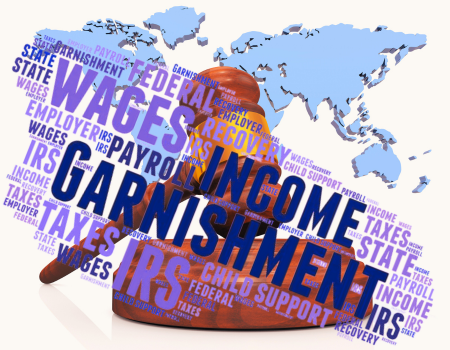Call us: +1-855-202-3299
Email: [email protected]
2024 Garnishment Update: Key Changes and Best Practices
Speaker: Dayna J Reum
Speaker Designation: Director of Payroll Operations at Ann & Robert Lurie Children’s Hospital of Chicago

Call us: +1-855-202-3299
Email: [email protected]
Speaker: Dayna J Reum
Speaker Designation: Director of Payroll Operations at Ann & Robert Lurie Children’s Hospital of Chicago

Wage garnishment is a complex topic in itself. Wage garnishment and creditor garnishment are some of the most complex tasks required of any payroll department. If garnishments are not handled correctly, you may find yourself facing situations that become extremely costly both financially and emotionally. Courts, federal and state regulations, bureaucracies, lawyers, and a multitude of other factors can complicate even the most basic procedures. Add in the emotional turmoil that often accompanies garnishment orders and even small errors can become major disasters.
The reality is that all people and entities involved in wage garnishment and other types of creditor garnishments expect action from the payroll department. Payroll must understand all the laws that apply to processing these garnishments backward and forward. It is sometimes even up to the payroll department to catch and correct any errors that have been made by anyone else along the way! Precise and accurate compliance with garnishment regulation can help to reduce or eliminate the emotional and financial toll that can result from these unfortunate situations as well as stave off any penalties that may result if processed incorrectly.
This webinar concentrates on processing wage garnishments in the payroll department other than child support. It covers the federal rules for creditor garnishments, the IRS rules for federal tax levies, the various aspects of state tax levies, the key points for processing state creditor garnishments, how to handle voluntary wage assignments such as payday loans and student loans. It includes best practices for reconciling and processing the garnishments in the payroll department. Sample memos for communicating with the employee concerning garnishments are included. Step-by-step math calculations are reviewed for tax levies and creditor garnishments. The IRS Form 668-W is reviewed.
Besides payroll tax, garnishments in general can be the most compliance-rich area for companies to maintain. Understanding all the laws in regard to garnishments such as child support orders, Federal and state levies, student loans and credit garnishments can be overwhelming. Companies need to understand these laws and how to apply them to avoid costly penalties.

Dayna currently is the director of payroll operations at a major medical center in Chicago and has been heavily involved in the payroll field for more than 20 years. She started as a payroll clerk at a small Tucson company but moved on to be a payroll team leader at Honeywell Inc. During her time at Honeywell Inc., she obtained her FPC (Fundamental Payroll Certification) through the American Payroll Association. Dayna has also received several merit awards for customer service acquisitions, and divestiture.
Dayna is no stranger to teaching; she has taught at the Metro Phoenix American Payroll Association meetings and at the Arizona State Payroll Conference. Topics include Payroll Basics, Global/Cultural Awareness, Immigration Basics for the Payroll Professional, Multi-State and Local Taxation and Quality Control for Payroll, and international and Canadian payroll.
She also serves on the National American Payroll Association the National Strategic Leadership Task Force, Government Affairs Task Force (PA Local tax subcommittee), and received a citation of merit for her service along with being a gold pin member of the APA. Dayna is also a CPP (Certified Payroll Professional) through the APA certified in HR hiring and firing practices and is a Six-Sigma Greenbelt.